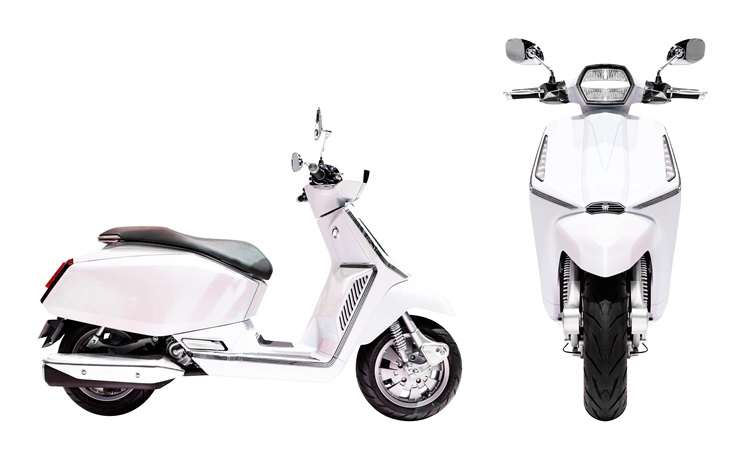Buying guide for second-hand scooters
Buying guide for second-hand scooters

Living in urban areas that are constantly jam-packed on the streets, purchasing a scooter becomes a convenient, cost-effective and fuel-efficient option. The smooth and easy driving experience that scooters offer has made them popular in both urban and rural areas and for riders of all age groups. Now, purchasing a new scooter is exciting, but the growth of the second-hand market has attracted many to explore the option of buying second-hand scooters.
Did You Know that sales of scooters have surpassed the sales of bikes by marking a sales growth of 24% during April-August, 2024, while the sales growth of bikes was 13% for the same period.
A second-hand scooter purchase requires you to perform due diligence to ensure that a seemingly great deal does not turn into a costly regret. We have prepared a guide of checklists that can help you in finding the right deal.
Second-Hand Scooters: Making the Right Choice
The primary concern behind purchasing a second-hand scooter revolves around the scooter’s performance, valid paperwork and cost-effective deal. Take a look at this practical buying guide to make the right choice:
1. Know Your Goals
Before you get into exploring your options, you first need to understand your goals. This includes understanding the type of scooter you want to purchase and the budget you have set. You can evaluate factors like your transport usage, the fuel type, storage needs, daily distance you would cover etc. Remember that when it comes to second hand scooters the range can vary from one seller to another.
Pro Tip: Keep a small portion of funds from your budget aside to meet any immediate expenses like minor repairs or ownership and insurance transfer.
2. Find the Right Seller
Purchasing a secondhand scooter in India can become overwhelming given the wide range of options, starting from individual sellers, vehicle dealers, and online marketplaces etc. The ideal way to go forward is to roughly explore all the available options and go for the one that best aligns with your transport and budget requirements.
3. Tick the Inspection Checklist
One of the most important steps in purchasing a second-hand scooter is the inspection checklist. While purchasing a secondhand scooter, make sure to check the physical condition, mechanical health and the paperwork thoroughly to avoid any future hassle. To give you an idea:
• The physical condition includes the bodywork, tyres, seat and controls, etc.
• The mechanical health primarily includes the engine sound, suspension, lights and indicators, brakes, etc.
• The paperwork includes the scooter insurance, pollution certificate, service record, registration certificate, etc.
Pro Tip: Low mileage is not a great sign of a better vehicle. Try focusing more on whether the vehicle has been serviced regularly over the years.
4. Take a Test Drive
If the vehicle is checking all the inspection checklists, it is time to take the scooter for a short spin around the city. A test drive can reveal a lot about the scooter. Make sure you are paying attention to vehicle noises, brakes, the overall balance, acceleration, comfortable riding position, etc. Remember that while riding a scooter, if the ride is uncomfortable, feel free to walk away.
5. Finalise the Purchase
Once you are satisfied with the deal, it is time to finalise the purchase. Before you pay the full amount, make sure you are getting a signed sale agreement, a valid RC transfer from the local RTO and imitate the insurance company to change the ownership.
Pro Tip: Make sure to check if the scooter involves financing. If yes, ensure that all the loans are cleared and a no objection certificate is provided.
6. Get a Reliable Insurance Plan
According to the Motor Vehicles Act, 1988, it is mandatory for you to have a valid two-wheeler insurance plan. Now, as a purchaser of a secondhand scooter, you might want to switch to a better insurance plan for coverage that meets your requirements. Here’s how you can find the right second hand two-wheeler insurance plan:
• Conduct a thorough research of insurance companies, their claim settlement ratio, plans, etc.
• Make sure to compare the available options to find the right deal.
• Third-party coverage will cover only third-party liabilities; a comprehensive bike insurance policy will cover your bike damages as well.
• Make sure to renew your 2 wheeler bike insurance plan annually to avoid any hassle.
Did you know that according to the Motor Vehicles Act, 1988 it is mandatory to purchase a - third party bike insurance plan to legally ride your vehicle in India.
Over to You
Purchasing a second-hand scooter is a smart and cost-effective decision. With a practical buying guide in hand and asking the right questions to the seller, you can make your second-hand purchase better than any other deal. Remember that purchasing a second-hand vehicle isn’t always about finding the cheapest deal rather it is about finding the right deal. Make sure that the vehicle you are purchasing has a valid bike insurance plan in place to avoid any legal or financial setback in future.
Disclaimer: The above information is for illustrative purposes only. For more details, please refer to the policy wordings and prospectus before concluding the sales.
RELATED ARTICLES
Which Type of Insurance is Best for Scooty?
A Complete Guide to Electric Scooter Insurance
How to Buy Scooter Insurance Online
Things To Know Before Buying Scooter Insurance










 Health Insurance
Health Insurance  Travel Insurance
Travel Insurance  Car Insurance
Car Insurance  Cyber Insurance
Cyber Insurance  Critical Illness Insurance
Critical Illness Insurance
 Pet Insurance
Pet Insurance
 Bike/Two Wheeler Insurance
Bike/Two Wheeler Insurance  Home Insurance
Home Insurance  Third Party Vehicle Ins.
Third Party Vehicle Ins.  Tractor Insurance
Tractor Insurance  Goods Carrying Vehicle Ins.
Goods Carrying Vehicle Ins.  Passenger Carrying Vehicle Ins.
Passenger Carrying Vehicle Ins.  Compulsory Personal Accident Insurance
Compulsory Personal Accident Insurance  Travel Insurance
Travel Insurance  Rural
Rural 











